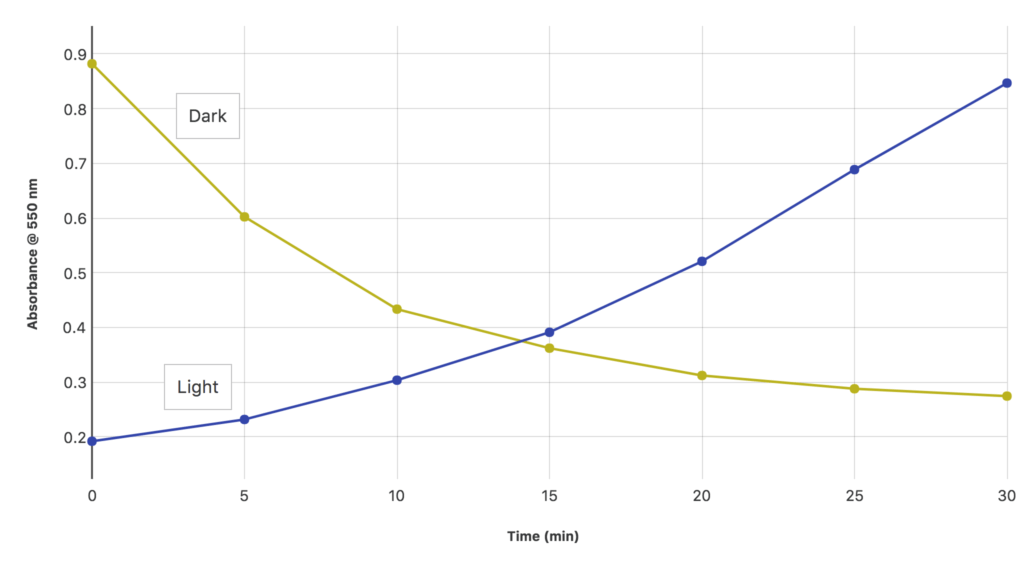Algae beads, along with the Go Direct® SpectroVis® Plus Spectrophotometer, provide a great way to study photosynthesis and respiration. Algae beads consist of freshwater algal cells suspended in sodium alginate and hardened in calcium chloride solution. In this suspension, the algal cells can still undergo cellular respiration and photosynthesis, exchanging gases with the liquid around them. Traditionally, a CO2 indicator solution is used to qualitatively observe that dissolved CO2 increases during cellular respiration and decreases during photosynthesis. However, in an experiment we’ve adapted from the Bio-Rad Explorer™ Program, students use a Go Direct SpectroVis Plus Spectrophotometer to quantify these changes.
In the experiment, algae beads are placed in cuvettes containing CO2 indicator solution and incubated either in the dark or the light. Students measure the absorbance once every 5 minutes using Go Direct SpectroVis Plus Spectrophotometer and our free Spectral Analysis™ app. As CO2 levels rise during respiration, the indicator solution turns more yellow in color, with a decrease in absorbance at 550 nm. As CO2 levels fall during photosynthesis, the color of the indicator changes first to red, and then to purple, as absorbance at 550 nm increases. Plotting both runs on the same graph clearly illustrates the inverse relationship between dissolved CO2 concentration and exposure to light.

The Photosynthesis and Cellular Respiration Kit for AP Biology from Bio-Rad Laboratories includes all of the supplies necessary for this fun and engaging experiment.
Download the photosynthesis and respiration experiment with algae beads »
